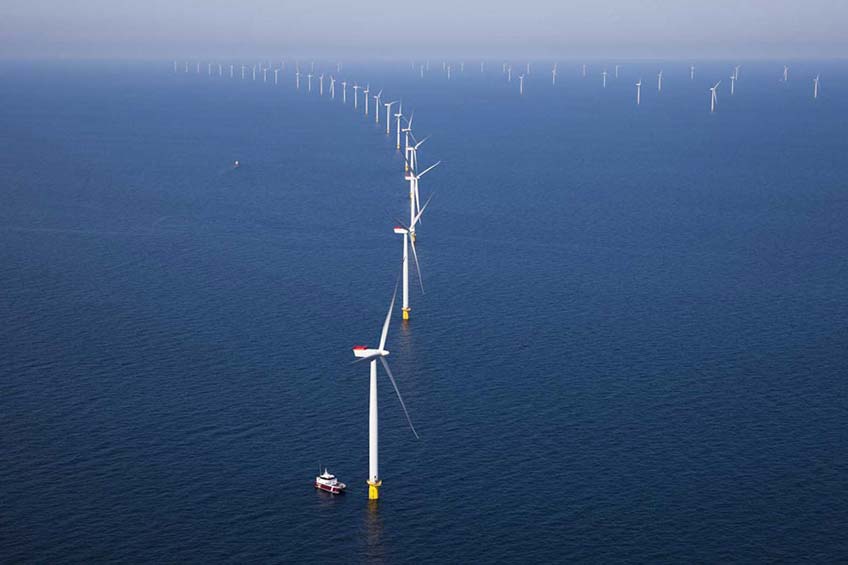The Leading Edge: March 2020 Wind Energy Newsletter
Offshore wind anchors this edition of The Leading Edge as researchers unveil a new 15-megawatt (MW) offshore reference turbine and facilitate conversations between commercial fisheries and the offshore wind industry.
News Stories
New Reference Turbine Gives Offshore Wind an Updraft
NREL To Help New York Fishing Communities and Offshore Wind Farms Share the Seas
Offshore wind farms show great promise as major generators of renewable power in the United States. But the emerging offshore wind industry shares waters with commercial fishing communities that have earned their living in the area for centuries, raising concerns about operational interactions between the two industries. To address these concerns, NREL is partnering with the Responsible Offshore Development Alliance and Global Marine Group on a 2-year, $500,000 project to develop solutions to address commercial fishing access in U.S. offshore wind farms.
Through a collaborative project funded by the New York State Energy Research and Development
Authority, NREL and its partners will gather data and develop solutions for minimizing
conflict between commercial fishing communities and offshore wind farms. Photo by Soren Kjedgaard, NREL
Buoy Your Knowledge of Floating Offshore Wind with NREL Webinar
While floating wind energy systems have yet to be deployed at industrial scale, the floating offshore wind energy project pipeline is growing rapidly. The global pipeline for floating offshore wind energy reached 4,888 MW in 2018—and now comprises 38 announced projects, including 46 MW of operating projects. Join NREL's Walt Musial, one of the nation's foremost offshore wind experts, for a Feb. 26 webinar to learn more about floating offshore wind.
Downwind—In Case You Missed It
Competitiveness Improvement Project Notice of Intent
NREL intends to release a request for proposals under the Competitiveness Improvement
Project (CIP) in early 2020. The CIP awards cost-shared subcontracts and technical
support to manufacturers of small- and medium-sized wind turbines to optimize their
designs, invest in advanced component development, implement advanced manufacturing
processes, and help certify these turbine models. Visit the CIP web page for more information.
NREL 2019 Annual Technology Baseline Predicts Declining Wind Energy Costs
A recent Forbes article, "Renewable Energy Prices Hit Record Lows: How Can Utilities Benefit from Unstoppable Solar and Wind?" covered new U.S. Energy Information Administration data predicting solar and wind energy will dominate America's new generation in 2020, making up 76% of new generation and adding 42 gigawatts of zero-emission capacity. The article cites NREL's 2019 Annual Technology Baseline, which predicts the levelized cost of wind energy will decline at least another 64% by 2050 in its optimistic scenario and at least 44% in its mid technology cost scenario. Read more about the 2019 Annual Technology Baseline for land-based wind.
Publications
Cost of Floating Offshore Wind Energy Using New England Aqua Ventus Concrete Semisubmersible Technology
This report provides cost, technological, and resource data for floating offshore
wind technology deployment at a hypothetical reference site in the Gulf of Maine.
Report findings indicate lower costs for floating offshore wind deployment than previously
estimated, resulting from recent technological and commercial improvements in the
global industry.
The Potential Impact of Offshore Wind Energy on a Future Power System in the U.S. Northeast
Quantifying the potential impact of offshore wind on a near-future electricity system
in the Northeastern United States, this study analyzes the Northeast power system
in 2024 for scenarios with up to 7 gigawatts of offshore wind. Featured information
includes offshore wind’s potential impacts on generation dispatch, curtailment, transmission
congestion, capacity credits, locational marginal prices, and production cost savings.
2018 Cost of Wind Energy Review
Using representative utility-scale projects to estimate the levelized cost of energy for land-based and offshore wind power plants in the United States, this annual report provides insight into wind energy cost trends and drivers.
Share

